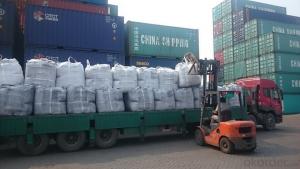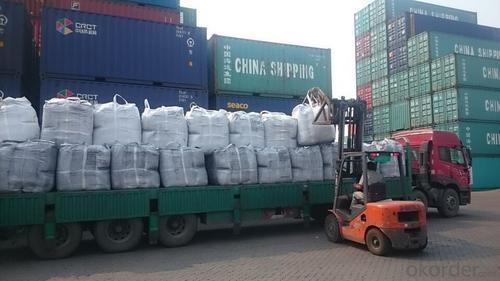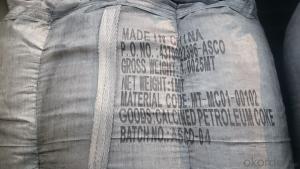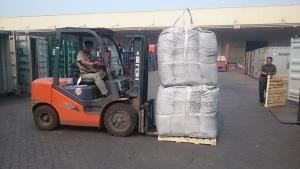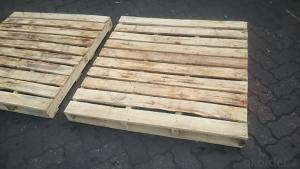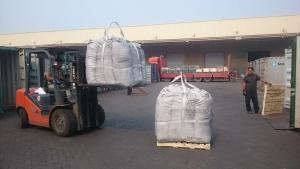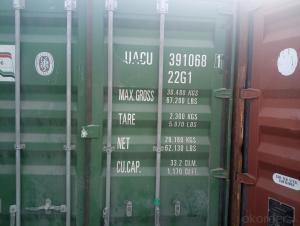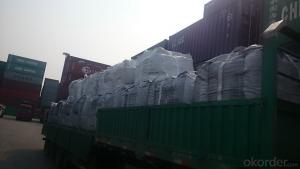Used in EAF as Charge Coke for Steel Plants with S 0.25%max
- Loading Port:
- Tianjin
- Payment Terms:
- TT OR LC
- Min Order Qty:
- 21 m.t.
- Supply Capability:
- 6000 m.t./month
OKorder Service Pledge
OKorder Financial Service
You Might Also Like
Introduction:
Calcined anthracite can be called carbon additive, carbon raiser, recarburizer, injection coke, charging coke, gas calcined anthracite.
Carbon Additive/Calcined Anthracite Coal may substitute massively refinery coke or graphite. Meanwhile its cost is much less than the refinery coke and graphite. Carbon Additive is mainly used in electric steel ovens, water filtering, rust removal in shipbuilding and production of carbon material.
It has good characteristics with low ash, low resistivity, low sulphur, high carbon and high density. It is the best material for high quality carbon products. It is used as carbon additive in steel industry or fuel.
Features:
Best quality Taixi anthracite as raw materials through high temperature calcined at 800-1200 ℃ by the DC electric calciner with results in eliminating the moisture and volatile matter from Anthracite efficiently, improving the density and the electric conductivity and strengthening the mechanical strength and anti-oxidation, It has good characteristics with low ash, low resistivity, low carbon and high density. It is the best material for high quality carbon products, it is used as carbon additive in steel industry or fuel.
Specifications:
F.C.% | 95MIN | 94MIN | 93MIN | 92MIN | 90MIN | 85MIN | 84MIN |
ASH % | 4MAX | 5MAX | 6 MAX | 6.5MAX | 8.5MAX | 12MAX | 13MAX |
V.M.% | 1 MAX | 1MAX | 1.0MAX | 1.5MAX | 1.5MAX | 3 MAX | 3 MAX |
SULFUR % | 0.3MAX | 0.3MAX | 0.3MAX | 0.35MAX | 0.35MAX | 0.5MAX | 0.5MAX |
MOISTURE % | 0.5MAX | 0.5MAX | 0.5MAX | 0.5MAX | 0.5MAX | 1MAX | 1MAX |
Pictures
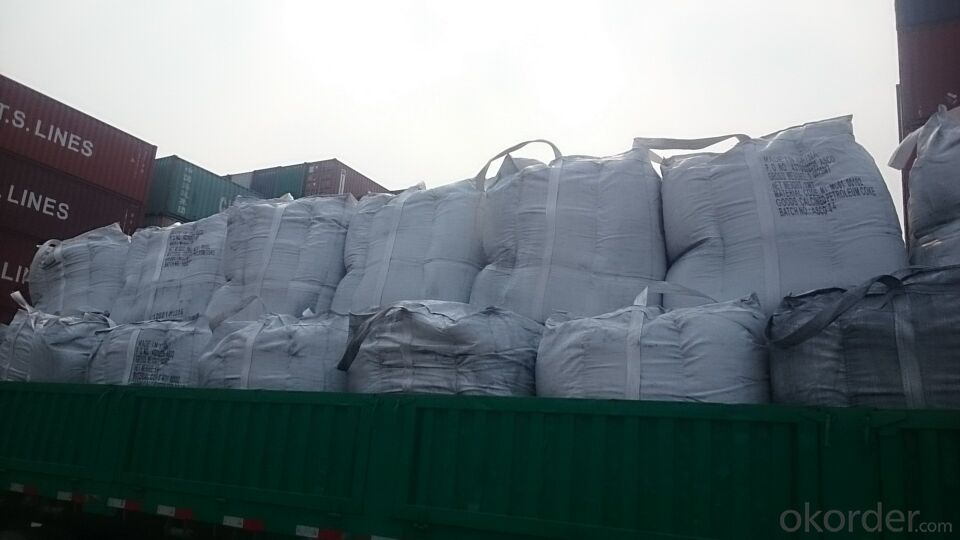
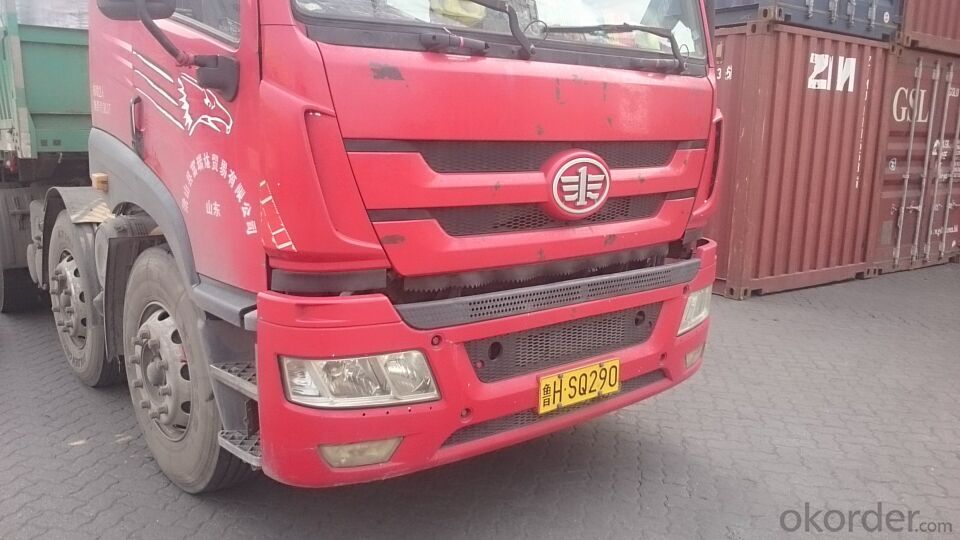
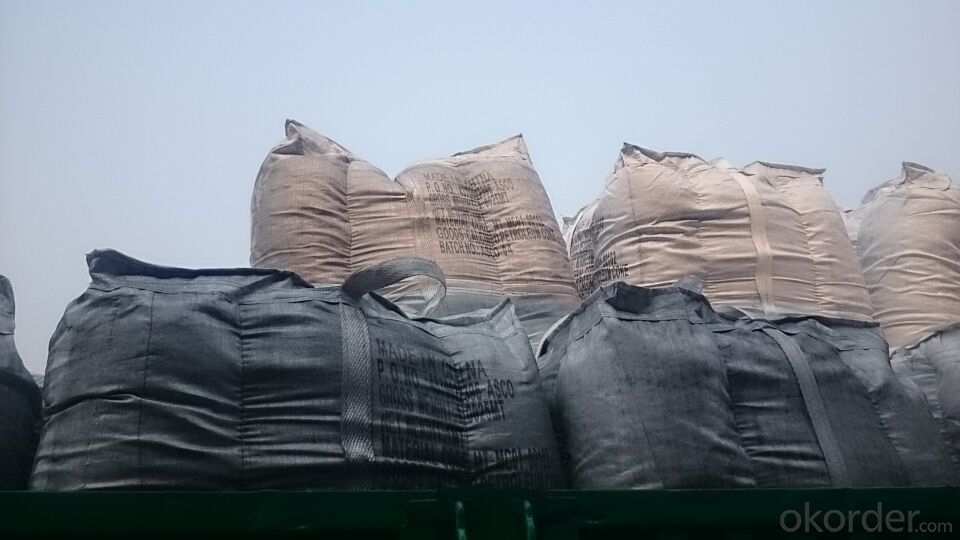
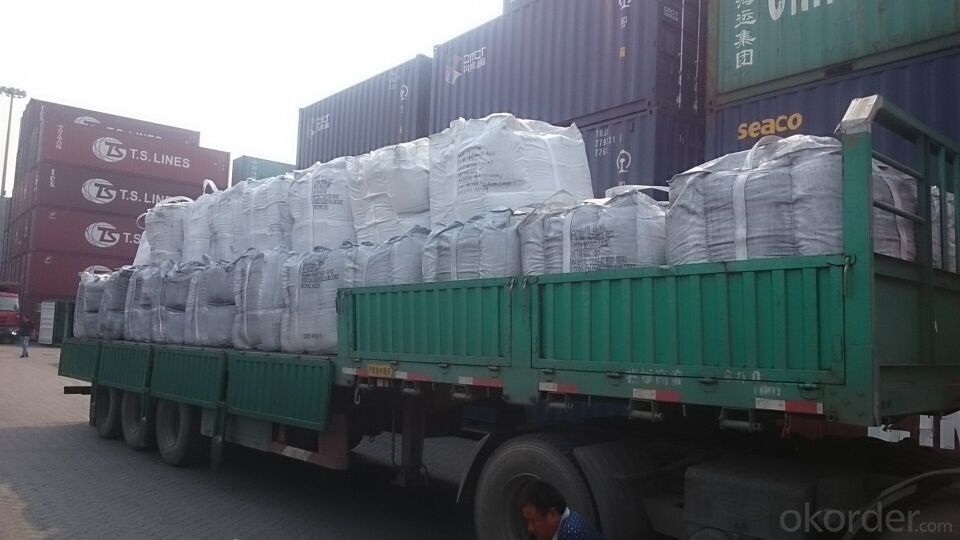
FAQ:
Packing:
(1). Waterproof jumbo bags: 800kgs~1100kgs/ bag according to different grain sizes;
(2). Waterproof PP woven bags / Paper bags: 5kg / 7.5kg / 12.5kg / 20kg / 25kg / 30kg / 50kg small bags;
(3). Small bags into jumbo bags: waterproof PP woven bags / paper bags in 800kg ~1100kg jumbo bags.
Payment terms
20% down payment and 80% against copy of B/L.
Workable LC at sight,
- Q: What are the effects of carbon emissions on agriculture?
- Agriculture is significantly harmed by carbon emissions, with various negative effects. Firstly, the presence of higher levels of carbon dioxide (CO2) in the atmosphere contributes to global warming, resulting in changes in rainfall patterns and more frequent occurrences of extreme weather events like droughts, floods, and heatwaves. These weather conditions disrupt agricultural production by reducing crop yields, damaging crops, and increasing the prevalence of pests and diseases. Higher temperatures also accelerate evaporation, which leads to soil moisture deficits and water scarcity. This has a detrimental impact on crop growth and productivity. Additionally, elevated CO2 levels can modify the nutritional composition of crops, reducing their quality and nutritional value. Research has demonstrated that increased CO2 concentrations can decrease the protein content in wheat and rice, potentially causing health issues for those who heavily rely on these staple crops. Moreover, carbon emissions contribute to the formation of ground-level ozone, a harmful air pollutant. Ozone damages plant cells, inhibits photosynthesis, and reduces crop yields. It particularly affects sensitive crops such as soybeans, wheat, and cotton. The consequences of carbon emissions on agriculture extend beyond crop production. Livestock farming is also affected, as rising temperatures and water scarcity make it more difficult to maintain adequate grazing lands and provide sufficient water and fodder for animals. Furthermore, changes in climate patterns can facilitate the spread of livestock diseases and pests, posing additional risks to the livestock industry. In conclusion, carbon emissions have far-reaching effects on agriculture, resulting in decreased crop yields, diminished nutritional value, challenges in livestock farming, and increased vulnerability to pests, diseases, and extreme weather events. It is crucial to address and mitigate carbon emissions to safeguard global food security and ensure the sustainability of agricultural systems.
- Q: What are the consequences of increased carbon emissions on urban areas?
- Increased carbon emissions have significant consequences on urban areas. One of the most notable impacts is the exacerbation of air pollution. Carbon emissions, particularly from vehicles and industrial activities, contribute to the release of harmful pollutants such as nitrogen oxides and particulate matter. These pollutants can lead to respiratory problems, exacerbate existing health conditions, and increase the risk of lung cancer and cardiovascular diseases among urban residents. Furthermore, increased carbon emissions contribute to the phenomenon of urban heat islands. Carbon dioxide and other greenhouse gases trap heat in the atmosphere, leading to rising temperatures in urban areas. This effect is particularly pronounced due to the abundance of concrete and asphalt surfaces that absorb and radiate heat. As a result, urban areas experience higher temperatures than surrounding rural areas, exacerbating the discomfort and health risks associated with heat stress, especially for vulnerable populations such as the elderly and those with limited access to cooling resources. The consequences of increased carbon emissions on urban areas also extend to the natural environment. Urban green spaces and ecosystems are negatively impacted as higher levels of carbon dioxide can disrupt plant growth and reduce biodiversity. This further exacerbates the loss of natural habitats and the degradation of urban ecosystems, leading to a decrease in the provision of ecosystem services such as air purification, temperature regulation, and stormwater management. In addition to the environmental and health impacts, increased carbon emissions also have economic consequences for urban areas. The cost of mitigating and adapting to climate change-induced challenges, such as flooding and extreme weather events, increases as carbon emissions rise. This puts a strain on local governments' budgets and can lead to higher taxes or reduced funding for other essential services. To address these consequences, it is crucial for urban areas to implement strategies that reduce carbon emissions and promote sustainability. This includes investing in public transportation, encouraging the use of renewable energy sources, promoting energy-efficient buildings, and implementing policies to reduce vehicle emissions. By taking these measures, urban areas can mitigate the negative consequences of increased carbon emissions and create healthier, more sustainable environments for their residents.
- Q: What is carbon black filler?
- Carbon black filler is a type of material made from fine particles of carbon that is added to various products, such as rubber, plastics, and inks, to improve their strength, durability, and color.
- Q: How is carbon used in the production of batteries?
- Carbon is an essential component in the production of batteries due to its unique properties. It is commonly used as an electrode material in both primary (non-rechargeable) and secondary (rechargeable) batteries. In primary batteries, carbon is used as a cathode material. It acts as a host for the chemical reactions that occur during the discharge process, enabling the flow of electrons. Carbon's high conductivity is crucial in ensuring efficient electron transfer, allowing the battery to deliver power effectively. Additionally, carbon's stability and low reactivity make it an ideal material for long-lasting primary batteries. In secondary batteries, such as lithium-ion batteries, carbon is utilized in both the anode and cathode. The anode consists of graphite, a form of carbon that can intercalate lithium ions during charging and release them during discharging. This process allows for the reversible storage and release of energy, making graphite an excellent choice for the anode material. Carbon is also used in the cathode of secondary batteries, where it enhances the overall performance. Carbon-based materials, like carbon black, are added to the cathode to improve its electrical conductivity and increase the surface area available for reactions. This leads to higher energy and power densities, improving the battery's overall performance. Furthermore, carbon additives, such as carbon nanotubes or graphene, are being explored to enhance battery performance further. These carbon-based materials have unique properties like high surface area, high electrical conductivity, and mechanical strength, which can potentially improve the energy storage capacity and lifespan of batteries. In summary, carbon plays a vital role in battery production by enabling efficient electron transfer, storage, and release of energy. Its conductivity, stability, and ability to intercalate ions make it an essential component in both primary and secondary batteries, contributing to the advancement of energy storage technology.
- Q: What's the difference between coal and carbon?
- Coke, too, is quite different from coal in physical properties.
- Q: How do you distinguish between alkaline and ordinary carbon cells?
- The alkaline cell of the carbon cell can touch the ring groove at the end of the negative electrode, and there is no groove in the cylindrical surface of the ordinary dry cell, because the two sealing methods are different.
- Q: I bought a grill myself and went to barbecue with my friends the day after tomorrow, but I can't ignite the carbon. What should I do?
- Just use a cigarette lighterA little bit better, then point the place down, and turn the fire upSoon enough ~!Then put a lot of charcoal on a piece of it ~!Enjoy your camping ~!
- Q: How to match?Want to breed a batch of roses seedlings, but the seedbed of mud, carbon soil do not know how to get, there is help in this regard...
- Five: sowing, that is, sowing and breeding in spring. Can also be seeding and furrow sowing, usually in mid April to germination. Spring planting and transplanting time autumn planting two, usually in late autumn or early spring before the leaves after the sap flow. Grafting grafting used multiflora rootstock, grafting and grafting of two points. Autumn budding survival rate, grafting position close to the ground as far as possible, the specific method is: in the side branch with rootstock grafting knife on the skin do "T" shaped incision, and then rose from the year growth of branches in a good selection of bud. Insert the bud into the "T" incision, then tie it with a plastic bag and shade properly so that it will heal in about two weeks. Plant ramets breeding more in late autumn or early spring, is the whole rose out of ramets soil, each plant has 1 to 2 branches and with some fibrous roots, the colonization in the basin or open, then can blossom. Cutting method in late autumn or early spring rose dormancy, their mature with 3 to 4 shoots cuttings. If the shoots are cut, shade properly and keep the seedbed moist. After cutting, the root can take root in 30 days, and the survival rate is from 70% to 80%. If the cuttings are dipped in the root, the survival rate will be higher. Layerage general in the summer, is the rose from parent branches bent down and pressed into soil, buried in the central branches, the lower half circle of the bark off, exposing branch end, the branches grow adventitious roots and grow new leaves, and then cut off the mother. As for the preparation of nutritious peat soil according to the following formula: two (1) mixture of peat mire soil and vermiculite, the proportion (by dry weight) for each 1/2 or 3/5:1/4; 2/5 or 3/4:1/4, then add the right amount of limestone (dolomite) and sandy fertilizer. (2) peat swamp soil 25-50%, vermiculite 0-25%, plus 50% of the soil. All of the above materials have been bought in the flower market.
- Q: How does carbon affect ocean acidification?
- Various human activities, such as burning fossil fuels and deforestation, release carbon dioxide (CO2) into the atmosphere. This CO2 is a greenhouse gas that, when absorbed by the oceans, leads to a process called ocean acidification. When CO2 dissolves in seawater, it reacts with water molecules and forms carbonic acid. This reaction increases the concentration of hydrogen ions (H+), resulting in a decrease in pH levels and making the seawater more acidic. This decrease in pH is a key characteristic of ocean acidification. As the ocean becomes more acidic, it disrupts the delicate chemical balance that many marine organisms rely on for survival and growth. Organisms like corals, shellfish, and phytoplankton use calcium carbonate to build their shells or skeletons, but increased acidity hampers their ability to do so. Ocean acidification also impacts the growth and development of marine plants and animals. For instance, changes in pH levels can affect the ability of larvae from certain marine species to form strong shells or skeletons. Additionally, acidified waters can disrupt the metabolism and reproductive processes of many marine organisms. The consequences of ocean acidification extend beyond individual organisms. Entire ecosystems, such as coral reefs, face threats due to increasing acidity. Coral reefs provide habitat for numerous species and are vital to marine biodiversity. However, the more acidic conditions make it challenging for corals to build and maintain their calcium carbonate structures, resulting in coral bleaching and degradation of reef systems. Moreover, ocean acidification can have cascading effects on other marine organisms and food webs. For example, changes in the growth and survival rates of phytoplankton, a primary food source for many marine species, can disrupt the entire food chain, impacting fish populations and ultimately affecting human communities that rely on seafood for sustenance and livelihoods. In conclusion, the rise in carbon dioxide emissions contributes to ocean acidification, which alters the chemistry of the oceans and poses significant threats to marine life and ecosystems. Understanding and addressing the causes and impacts of ocean acidification are essential for the long-term health and sustainability of our oceans.
- Q: How does carbon dioxide affect the pH of soil?
- Carbon dioxide can lower the pH of soil by reacting with water to form carbonic acid, which increases the acidity of the soil.
Send your message to us
Used in EAF as Charge Coke for Steel Plants with S 0.25%max
- Loading Port:
- Tianjin
- Payment Terms:
- TT OR LC
- Min Order Qty:
- 21 m.t.
- Supply Capability:
- 6000 m.t./month
OKorder Service Pledge
OKorder Financial Service
Similar products
Hot products
Hot Searches
